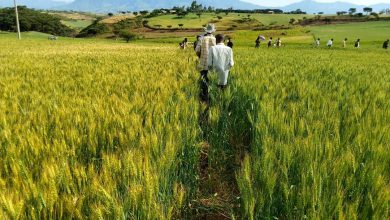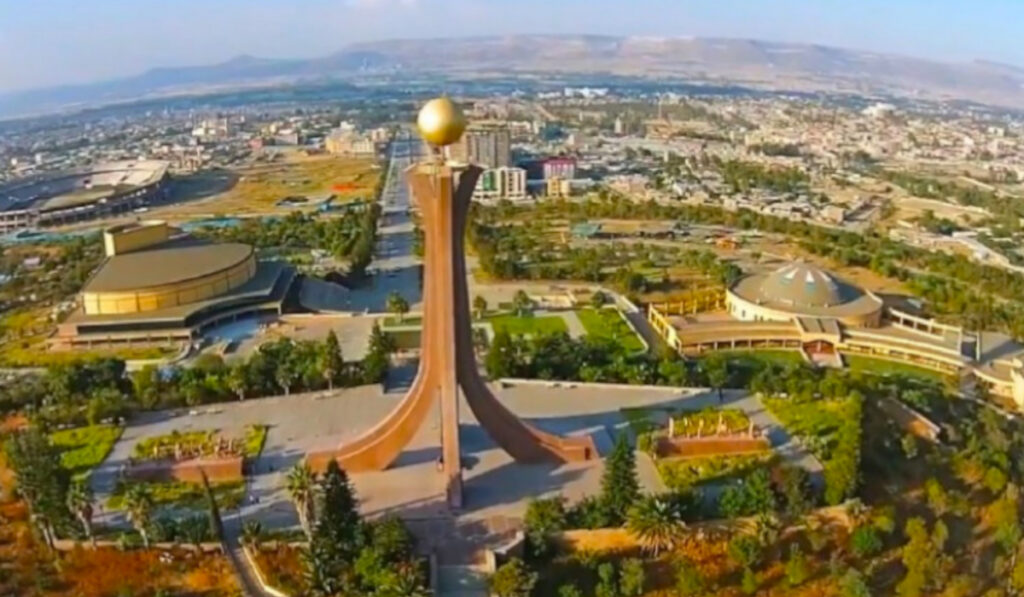
By Medihane Ekubamichael @Medihane
Addis Abeba, June 12, 2021 – In a press conference, Gebreegziabher Aregawi, Director of the Tigray Regional State Agricultural and Rural Development Bureau Disaster Risk Management Directorate, said that 6.3 people in Tigray require immediate humanitarian assistance.
Tigray TV quoted the director as saying, the number of people who needed humanitarian aid before the commencement of aid distribution was 4.5 million while displaced people of 1.7 million totaling 6.2 million people are in need of daily aid out of which 3.3 million have been given food supplements and other aid materials. “Until the last month and a half 1,710,347 IDPs were identified in the region and now we are trying to reach 6.3 million people. The IDPs, until last week’s report, have reached 2.2 million,” he said.
Shire town alone has over 603,000 IDPs, which means it exceeds the 480,000 residents of Mekelle estimated by the Central Statistics Agency. He said aid is being distributed for the third time indicating there was support from the federal government in the distribution and delivery of the aid, especially the National Disaster Risk Management Commission (NDRMC) while other government institutions contributed to the aid.
The aid distribution process had encountered peace, security, and equitability issues according to the director. “We are distributing based on criteria set prioritizing those with a disability, those with kids, elderlies, and those who need care,” he said. He also said that the first and the second-round distribution had defects giving out to those in need including the case in Mekelle and other areas.
The director also disclosed that his office was in collaboration with the NDRMC with the aim of getting the delivery and distribution work done with better accessibility and refined way. “A solution is being set to work along with distributing partners,” The director said.
The first and the second-round aid gathering and distribution of aid in Tigray that took place since December was facilitated mainly by the federal government and partly from USAID through Relief Society of Tigray (REST) that reached 26 to 30 Woredas.
The rest are was being covered by the government, however, the government at the lower structure is not in place. Grains however need to reach down there, therefore we agreed that we needed to seek another partner. The allocation data to each specific location is given by the government for distribution.
The 1st round humanitarian assistance, from what was approved as HR2020/21 for all regions was given to partners like Food for Hungary (FH), Care, REST, World Vision (WV), and World Food Program (WFP), with the last three handling a significant amount of aid.
On the other hand on the presser delivered at the Office of the Prime Minister in which Commissioner Mitiku Kassa of NDRMC, set to give information on humanitarian assistance interventions with regard to the situation in Tigray, he disclosed that food and non-food items have been delivered for 4.5 million beneficiaries in the first round and have been delivered for 5.2 million beneficiaries in the second and third rounds and it continues to address more people.
According to the statement, 170,798 Metric Ton (MT) of food which costs 5.4 billion ETB or 135 million USD has been distributed so far. The food distributed in the region for the 1st and 2nd rounds were covered by both governments (70%) and Partners (30%). The 3rd round of food distribution 6 operators involved partners like the World Food Program, World Vision, CARE, Relief Society of Tigray (REST), Food for the Hungry (FH), and the Government of Ethiopia are providing food assistants in the region.
Commissioner Mitiku Kassa Stressing on beneficiary numbers, said, “Currently the report from humanitarian partners has been released indicating that 5.2 million or 90% of the population of the region needs immediate humanitarian assistance.” he continued “While we look at the breakdown of these 5.2 million people, we can observe that 1,010,752 people are Productive SafetyNet Beneficiaries and 40,336 are Eritrean refugees.”
He said these two programs, namely PSNB and Refugee programs, had their own resources which should not be included in the beneficiary list for humanitarian assistance.According to the commissioner, 5 humanitarian partners, namely, WFP, WV, CARE International, REST, and FH cover 84.95 % of the woredas and address 91.3% of the food supply and distribution needs whereas 15.05 % of the woredas and 8.70 % of the food supply and distribution is covered and addressed by the Government of Ethiopia. AS
 Unseasonal rains threaten crop yields in Ethiopia’s Oromia, Amhara regions; farmers report crop losses
Unseasonal rains threaten crop yields in Ethiopia’s Oromia, Amhara regions; farmers report crop losses News: TPLF calls for full Implementation of Pretoria peace deal on second anniversary, citing ‘unfulfilled’ commitments
News: TPLF calls for full Implementation of Pretoria peace deal on second anniversary, citing ‘unfulfilled’ commitments